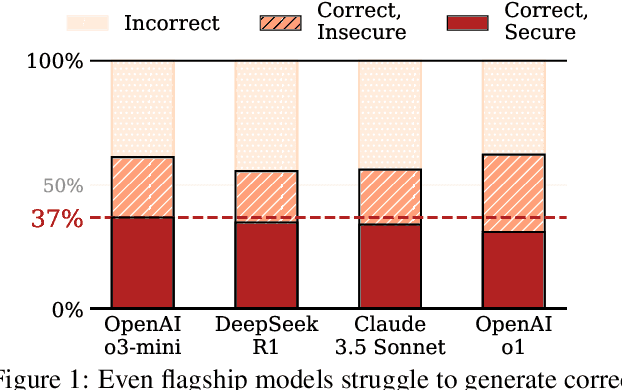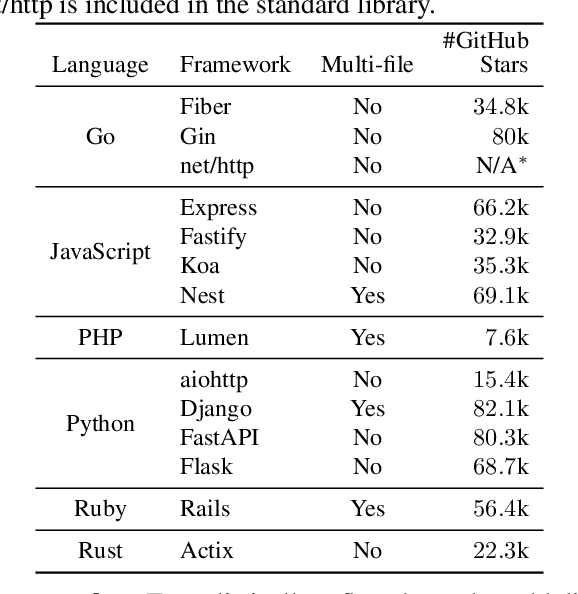Victor Chibotaru
BaxBench: Can LLMs Generate Correct and Secure Backends?
Feb 20, 2025



Abstract:The automatic generation of programs has long been a fundamental challenge in computer science. Recent benchmarks have shown that large language models (LLMs) can effectively generate code at the function level, make code edits, and solve algorithmic coding tasks. However, to achieve full automation, LLMs should be able to generate production-quality, self-contained application modules. To evaluate the capabilities of LLMs in solving this challenge, we introduce BaxBench, a novel evaluation benchmark consisting of 392 tasks for the generation of backend applications. We focus on backends for three critical reasons: (i) they are practically relevant, building the core components of most modern web and cloud software, (ii) they are difficult to get right, requiring multiple functions and files to achieve the desired functionality, and (iii) they are security-critical, as they are exposed to untrusted third-parties, making secure solutions that prevent deployment-time attacks an imperative. BaxBench validates the functionality of the generated applications with comprehensive test cases, and assesses their security exposure by executing end-to-end exploits. Our experiments reveal key limitations of current LLMs in both functionality and security: (i) even the best model, OpenAI o1, achieves a mere 60% on code correctness; (ii) on average, we could successfully execute security exploits on more than half of the correct programs generated by each LLM; and (iii) in less popular backend frameworks, models further struggle to generate correct and secure applications. Progress on BaxBench signifies important steps towards autonomous and secure software development with LLMs.
DeepCode AI Fix: Fixing Security Vulnerabilities with Large Language Models
Feb 23, 2024Abstract:The automated program repair field has attracted substantial interest over the years, but despite significant research efforts, creating a system that works well for complex semantic bugs such as security vulnerabilities has proven difficult. A promising direction to solve this challenge is by leveraging large language models (LLMs), which are increasingly used to solve various programming tasks. In this paper, we investigate the effectiveness of LLMs for solving code-repair task. We show that the task is difficult as it requires the model to learn long-range code relationships, a task that inherently relies on extensive amounts of training data. At the same time, creating a large, clean dataset for complex program bugs and their corresponding fixes is non-trivial. We propose a technique to address these challenges with a new approach for querying and fine-tuning LLMs. The idea is to use program analysis to limit the LLM's attention mechanism on the portions of code needed to perform the fix, drastically reducing the amount of required training data. Concretely, for training and inference, rather than feeding the entire program to the LLM, we reduce its code to a much shorter snippet that contains the reported defect together with the necessary context - and use that instead. Our evaluation shows that this code reduction approach substantially improves available models such as GPT-4 using few-shot learning, as well as fine-tuning models. To train and evaluate our system, we created a comprehensive code fixing dataset by extensively labeling 156 bug patterns (including 40 security rules), requiring complex interprocedural dataflow to discover. Our best system with Mixtral-8x7B can remove more than 80% of the reported defects while exactly matching the human fix in between 10 and 50% of cases, outperforming baselines based on GPT-3.5 and GPT-4, or based on window-based models like TFix.
 Add to Chrome
Add to Chrome Add to Firefox
Add to Firefox Add to Edge
Add to Edge